Have you ever dreamt of following in the footsteps of David Attenborough? Of visiting the world’s wildest places and witnessing the intimate moments of animals’ lives?
This is what the adventure of wildlife watching is all about. It is a form of eco-tourism, wildlife eco-tourism to be precise, and it builds on the idea of watching animals in the wild without directly interacting with them which in most cases mean that your encounter with the animals is ethical.
So, where do you start planning a wildlife watching adventure? Do you turn to wildlife travel experts like Naturetrek, or are you more of an independent explorer? In either case, the options are incredibly diverse.
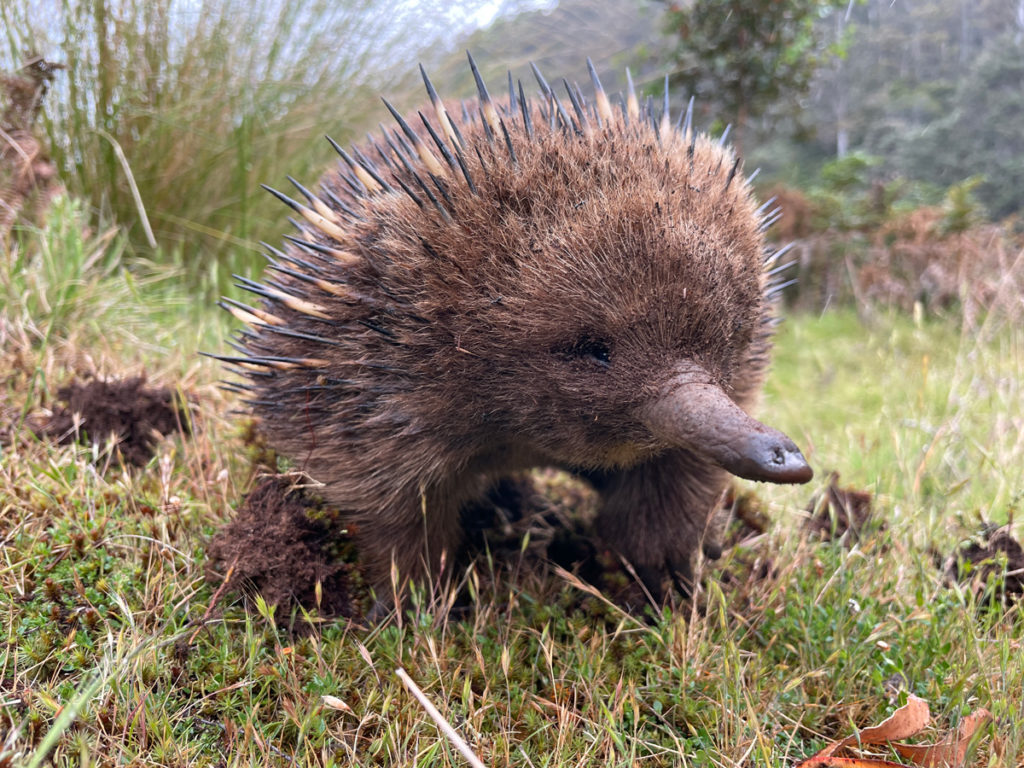
Looking for some inspiration for wildlife destinations?
I have dedicated guides to:
Australian Animals
Brazilian Animals
Costa Rica Animals
Thailand’s Animals
Borneo Animals
Bhutan Animals
Once you decide on what kind of wildlife watching trip you want, you can start planning your adventure. There are a few things to consider for a successful wildlife watching trip, and this guide takes you through the key steps.
If you are not ready to start planning yet, read some books for safari lovers to get inspired. And don’t forget to pick up some lingo for your safari, like these collective nouns for animals.
What is wildlife watching
It is an experience of observing animals in their environment. Observing animals in the wild does not involve animal handling or any kind of interaction with the animals. The point is for your presence to be minimally disruptive for the animals so they can safely ignore you and move on with their day, accepting you as part of the landscape. And if they do choose to interact with you, it will be on their terms.
Where to go wildlife watching
The first thing to do is, obviously, decide where you want to go. You can see animals in the wild virtually anywhere, but as a starting point, here is a whirlwind tour of some of the best wildlife destinations on all 7 continents.
For more ideas, check out my guides to wildlife watching destinations around the world:
Africa
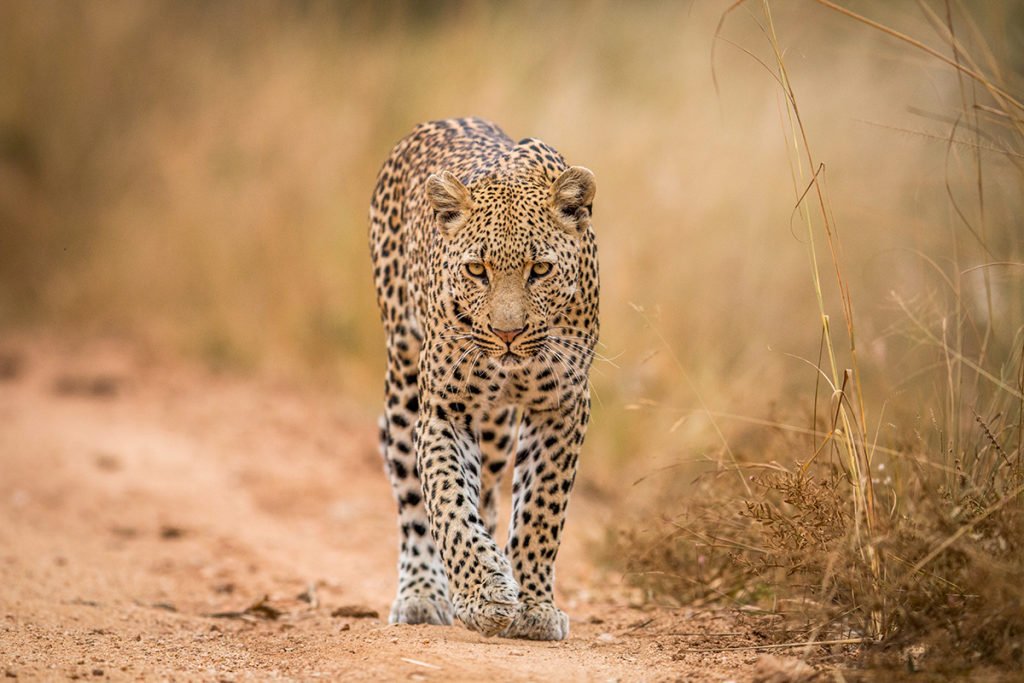
It’s a tough call to cover Africa’s safari destinations in a couple of paragraphs – the options are almost endless. Kgalagadi Transfrontier Park in South Africa is a superb desert destination for spotting big cats, mongooses, meerkats, and bat-eared foxes.
Serengeti and Masai Mara safari in Tanzania and Kenia, respectively, are unmissable if you want to witness the epic wildebeest migration across the endless plains. Etosha NP in Namibia is good for seeing large herds of zebra, impala and springbok, as well as black rhinos and flamingos. Volcanoes National Park in Rwanda is the place to visit to watch Mountain gorillas, while Madagascar is the land of the lemurs.
To get off the beaten track, consider Mayumba National Park in Gabon. Often referred to as one of the Earth’s last remaining untouched paradises, Mayumba is a logistical challenge to get to. However, once you are there, you’ll have a rare chance of seeing forest elephants foraging on the beach where the rainforest meets the Atlantic Ocean.
Asia
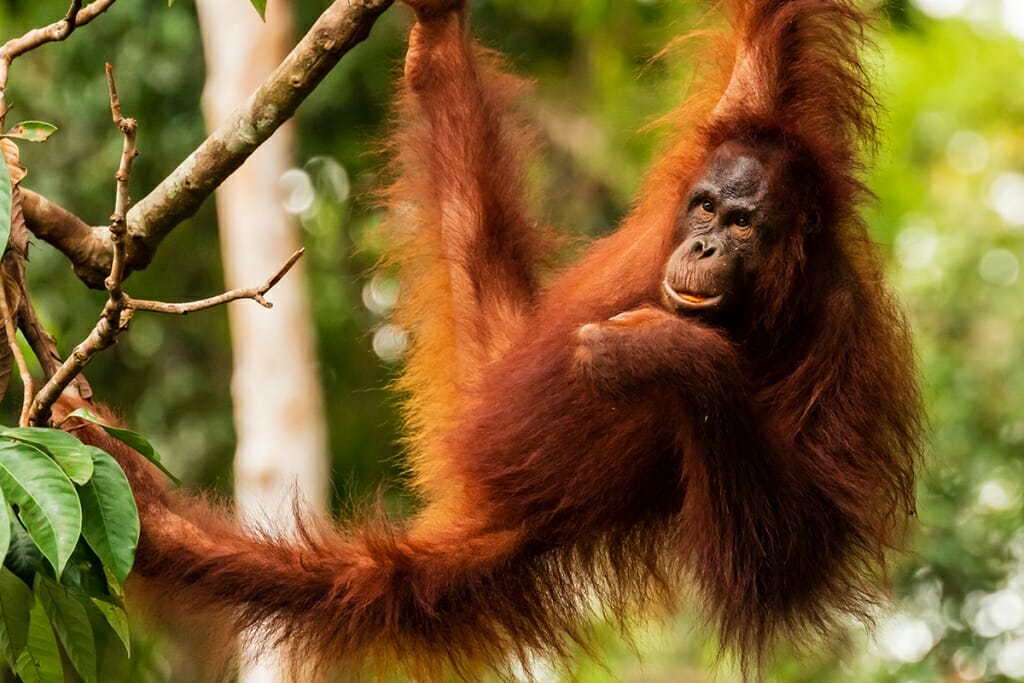
Asia is another huge region with abundant wildlife safari options. Kanha National Park in India is one of the best places in the world to see tigers in the wild, while Gir NP is the only place in the world to see Asiatic lions.
Sri Lanka’s Wilpattu National Park is renowned for its sloth bears and leopards, while the island’s coastal waters are the best place in the world for spotting Blue Whales – the largest living creatures on earth. In fact, a wildlife safari in Sri Lanka is a unique opportunity for extraordinary encounters with wildlife, from leopards and whales to the annual elephant gathering.
Less-known wildlife watching destination in Asia is Borneo. Deramakot Forest Reserve is the only place in Asia that gives you a decent chance of spotting a clouded leopard, while Kinabatangan River is a great spot for seeing a diverse range of Borneo wildlife, including orangutans, proboscis monkeys, and six species of hornbills.
In Thailand, Khao Yai, Kraeng Kachang, and Khao Sam Roy Yot National Parks are all good for seeing a variety of species. Sor some elusive high-altitude species like the snow leopard and Pallas’ cat, Tibetan Plateau is the place to go.
Latin America
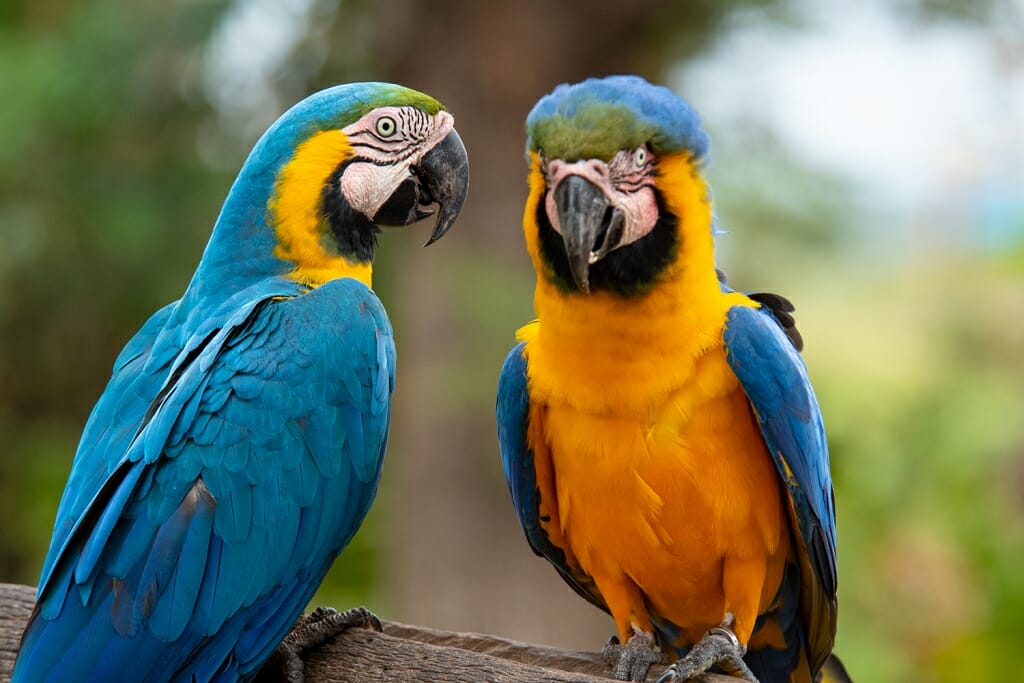
Latin America is one of the best places in the world for wildlife watching. Brazilian Pantanal is a superb destination for spotting jaguars, giant anteaters, giant otters, maned wolves, and Hyacinth macaws. The Amazon is all about the primates, although it’s harder to spot animals in its thick jungle than in the open wetlands of the Pantanal. The Galápagos Islands in Ecuador are unsurpassed in terms of endemic biodiversity.
Costa Rica’s Corcovado National Park is excellent for Central American species, like Baird’s tapirs, tamanduas, tent-making bats, toucans and primates, while Tirimbina is great for spotting poison dart frogs and Honduran white bats.
In Argentina, Peninsula Valdes in Patagonia is the best place on the continent for observing marine wildlife. Next door, in Chilean Patagonia, Torres del Pain NP is the world’s best spot for watching pumas in the wild. And in Colombia, Llanos Orientales plains are your best chance to spot pumas, jaguars and giant anteaters.
North America
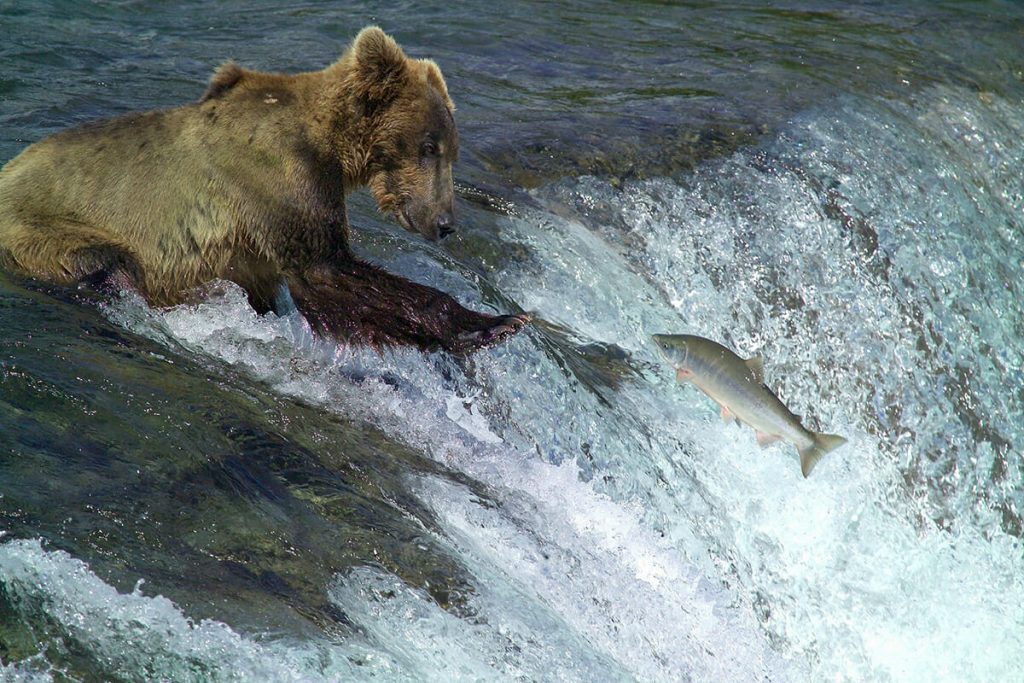
From deserts to glaciers, North America encompasses a huge variety of landscapes that present unique wildlife watching opportunities. Katmai and Lake Clark National Parks in Alaska are the world’s best places for bear viewing. Yellowstone is one of the most wildlife-rich areas in North America and is fantastic for spotting grizzly bears, black bears, bison, moose and wolves.
Channel Islands National Park is the place to see Channel Island foxes, spotted skunks, whales, dolphins, seals, Californian sea lions, and California’s only endemic carnivore – the Island fox. Theodore Rosevelt National Park is good for spotting American bison, elk, mustangs, coyotes, and prairie dogs. To see polar bears, head to Canada’s Hudson Bay, and for black bears, orcas, gray whales, and humpback whales, visit Tofino on Vancouver Island.
And to spot American alligators, sea turtles and an incredible diversity of birds, you can’t beat Everglades National Park in Florida.
Europe
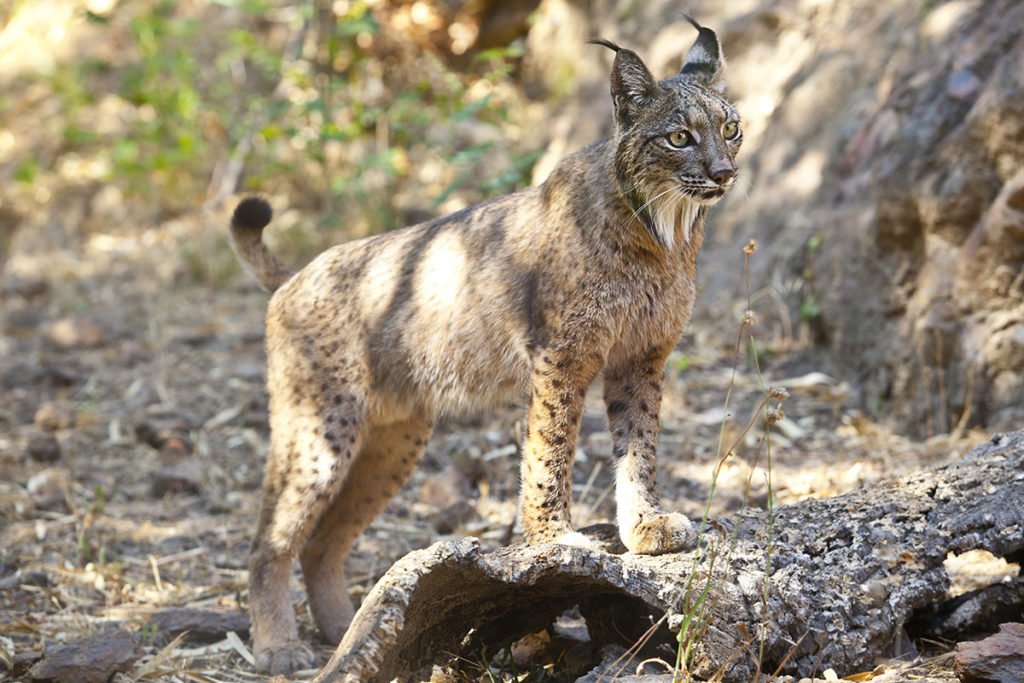
Europe is not a region that comes to mind when you think of a safari holiday, but you’ll be surprised how much wildlife you can see in Europe if you know where to look. Sierra de Andujar Natural Park, just 100km east of Cordoba in southern Spain, is your best chance of spotting an Iberian lynx, as well as wolf, black vulture, black stork, and Spanish imperial eagle. Nolsoy island in Denmark’s Faroe Islands is home to the largest population of European Storm Petrels in the world as well as large numbers of Atlantic puffins.
In the UK, Atlantic puffins and grey seals can be spotted on the British Isles or on Farne Island, while dolphins can be seen from a boat along the Cornish coast. Danube Delta in Romania is great for seeing large breeding colonies of water birds like great white pelicans, glossy ibises, and red-breasted geese. In Italy, you can spot the Apennine wolf in Majella National Park.
Australia
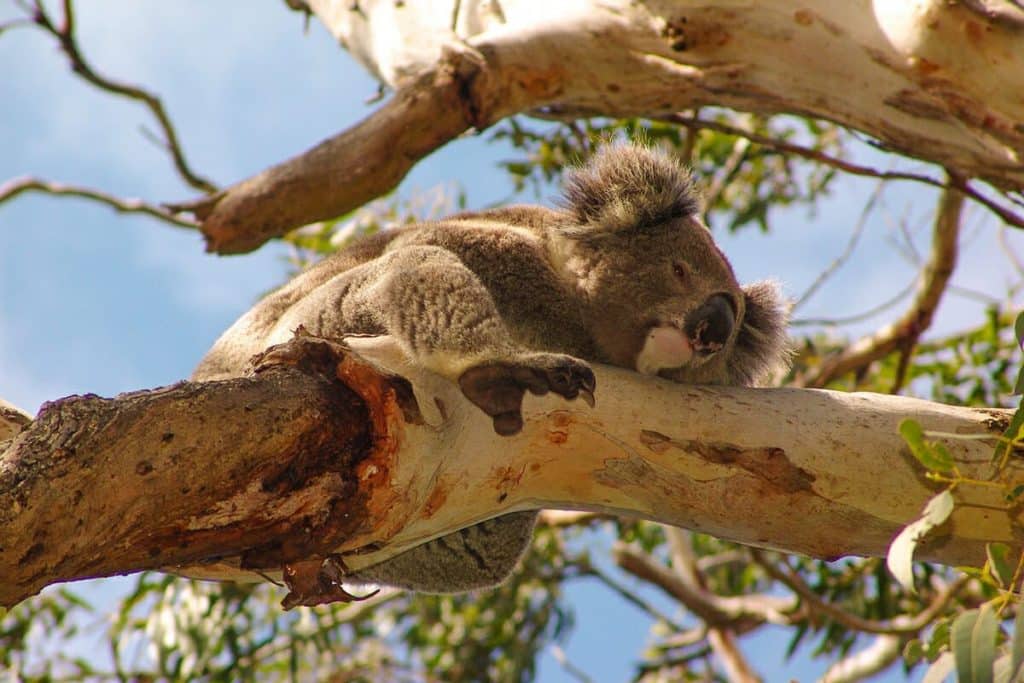
The majority of Australian animals are endemic to Australia and some of the most unique creatures you’ll want to see down under are the egg-laying mammals: the short-beaked echidna and the platypus. Kangaroo Island in South Australia is a good place to look for both species as well as koalas, kangaroos, seals, and sea lions.
Many Australian wildlife destinations are world-famous locations, like the Great Barrier Reef in Queensland, Cradle Mountain National Park in Tasmania (great for wombats, Bennett’s wallabies, Tasmanian pademelons and occasionally, Tasmanian devils) and Shark Bay and Rottenest Island in Western Australia. To see the world’s largest saltwater crocs and a plethora of water birds, head to Kakadu National Park in the Northern Territory.
Flinders Ranges National Park in South Australia is good for seeing Western grey kangaroo, red kangaroo, common wallaroo, and yellow-footed rock wallaby. To see the desert-adapted marsupials, dingos, wedge-tailed eagles, and thorny devils, head to Old Andado Station or West MacDonnell Ranges in Central Australia. With a bit of effort, you can even see a fair bit of wildlife in and around Sydney.
Antarctica
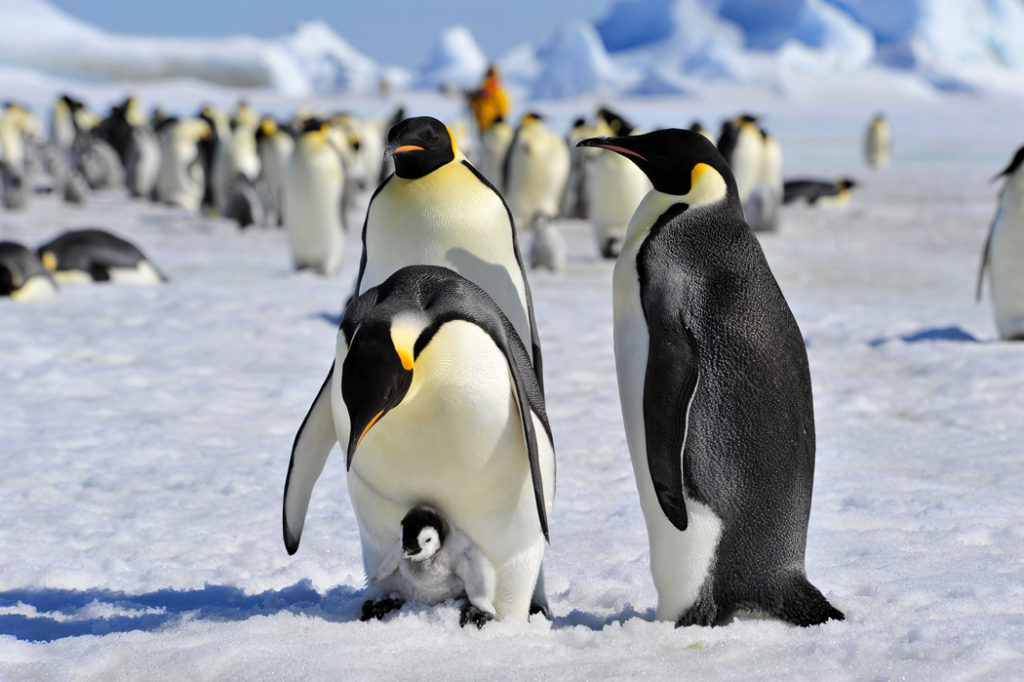
Due to its inhospitable environment for human beings, Antarctica is one of the most pristine destinations on Earth. You can only visit the 7th continent on a cruise ship, and there are two key areas the ships go to: South Georgia Island and the Antarctic Peninsula.
South Georgia Island is home to the world’s largest populations of king and macaroni penguins; we are talking hundreds of thousands of birds, as well as emperor penguins, leopard seals, fur seals, albatrosses, and reindeer, brought to the island by the Norwegian sealers and whalers.
Antarctic peninsular is good for spotting various species: gentoo, Adelie, and chinstrap penguins tending to their chicks; while weddell, crabeater fur seals and leopard seals lounge on the beach or nap on the floating sea ice.
When to go wildlife watching
Once you decide where you want to go or what animal/s you want to see, you’ll need to figure out what season would give you the highest chance of success. Most animals change their behaviour patterns throughout the year, and many locations become inaccessible at certain times of the year. Here is a sample of a wildlife watching calendar to give you some ideas.
January
- Male marine iguanas are in breeding colours on the Galápagos Islands.
- Iberian lynx are more active in Spain during their breeding season
- Flamingo numbers peak in Laguna Colorado in Bolivia.
- Good time to see wolves in the snowy landscape of Yellowstone National Park, USA
- The wet season in Madagascar is the courting season for chameleons.
- Courtship displays of red-crowned cranes in Hokkaido, Japan
- Peak nesting time for waterbirds in Costa Rica’s Palo Verde National Park
- Kea congregate in large flocks at Authur’s Pass National Park in New Zealand
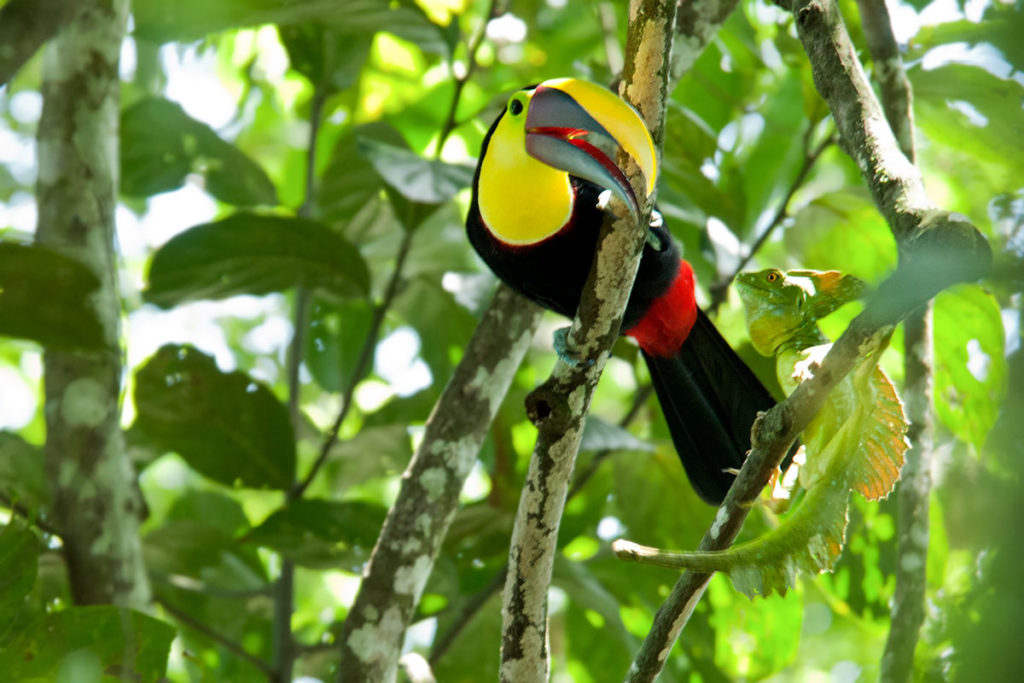
February
- Good time to see big cats without crowds in Serengeti, Tanzania
- Snow cover makes it easier to see snow leopards in Ladakh, India
- The peak nesting season of Red-billed queleas attracts many predators in Kruger National Park, South Africa
- Birds, crocodiles and otters congregate around water holes in the Everglades National Park, USA
- Adelie penguin chicks dash for the sea on the Antarctic peninsula
- Baby platypus make their first forays into the world in Eungella National Park, Australia
- Rains arrive in Kgalagadi Transfrontier Park, South Africa
- Young Tasmanian devils are becoming independent – they are easier to see than the more cautious adults at Cradle Mountain-Lake St Clair National Park, Tasmania
March
- White Harp seal pups can be seen on Magdalen Islands, Canada
- Tigers can be found cooling off in water holes in Kanha National Park, India
- Breeding season of Resplended quetzals, Monteverde Cloud Forest Reserve, Costa Rica
- Calving seasons of Blue whales, Gulf of Corcovado, Chile
- The end of the rainy season is a good time to see Borneo Orangutans in Danum Valley, Borneo
- Sandhill cranes congregate in huge numbers at Platte River, Nebraska, USA
- Killer whales arrive in Valdes Peninsular, Argentina, to hunt seal pups
- Good chance of seeing young meerkats in Addo National Park, South Africa
April
- Elephants congregate out in the open near the watering holes in Periyar National Park, India.
- Spot sea otter pups in Monterey Bay, California, USA
- Baby tarsiers are borne on Kinabatangan River, Borneo
- Less crowded time in Kibale Forest National Park, Uganda – good for watching chimpanzees
- Baby red squirrels are borne in Europe
- Male Superb lyrebirds displaying in Royal National Park, Australia
- Sooty terns congregate in large numbers on Seychelles
May
- Good time to visit Bhutan’s National Parks looking for bharals, takins, and blood pheasants
- Best weather for visiting the Galápagos Islands
- Breeding season for Komodo dragons, Komodo National Park, Indonesia
- Horseshoe crabs spawning in Delaware Bay, USA
- Spring flowering season is a good time to see American bison in Tallgrass Prairie Preserve, Oklahoma, USA
- There is a chance to see Eurasian otter pups in North Devon, England
- Spotted-tailed and Eastern quolls begin mailing in Tasmania, Australia. An excellent place to spot them is Mountain Valley Private Nature Reserve.
June
- Best time to visit Arctic National Wildlife Refuge in Alaska to watch predators and breeding bird colonies
- Calving season of barren-ground caribou in Alaska’s National Parks
- North Atlantic seabirds congregate in large breeding colonies in the UK
- Sparse vegetation of the dry season offers better visibility in Kruger National Park
- Mountain goats come down to mineral licks in Jasper National Park, Canada
- In the dry season, water birds and crocodiles congregate at water holes in Kakadu National Park, Australia
- Wildebeest migration in Serengeti, Tanzania
- Male Pacific walruses congregate in their thousands in Walrus Islands State Game Sanctuary, Alaska, USA
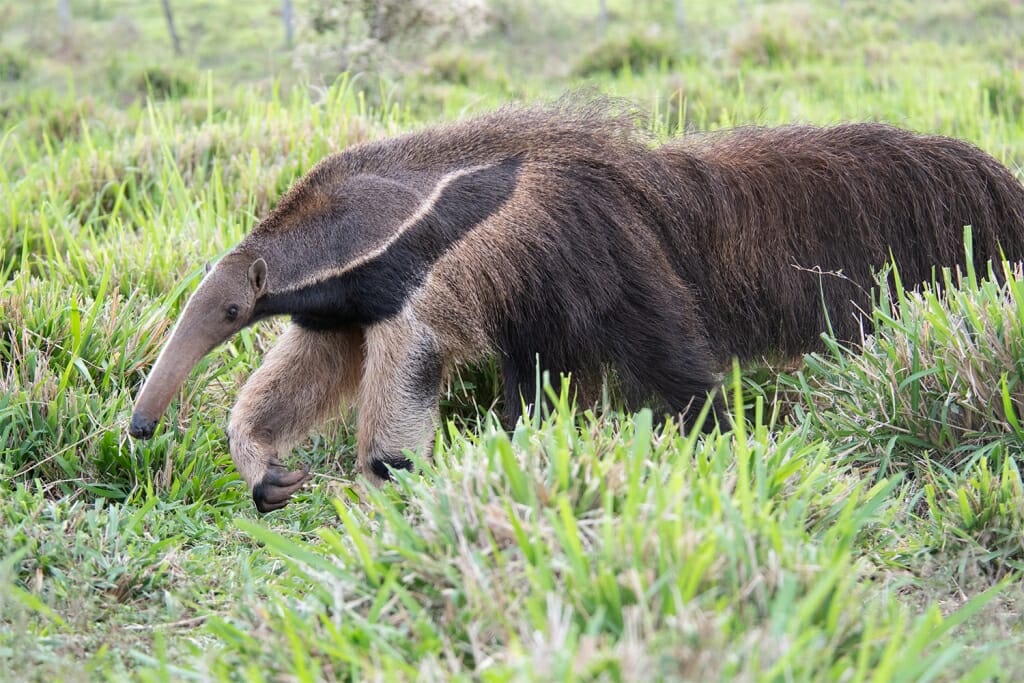
July
- Water levels start to drop in Pantanal National Park, Brazil and jaguars are easier to see
- Good weather for visiting southern Pantanal to look for ocelots and other Brazilian wildlife
- Humpback whale migration past Sydney, Australia
- Brown bears gorging on salmon at Katmai National Park, Alaska, USA
- Great White Sharks hunt young seals in South Africa
- Good time of year for visiting Caraca Reserve in Brazil to see maned wolves
- In the dry season, the trails in Bwindi Impenetrable National Park, Uganda are easier to navigate for gorilla tracking
- Belugas concentrate in large numbers around Somerset Island, Canada
August
- Wild Ass males fight for dominance during the breeding season at Wild Ass Sanctuary in India
- You can help save Atlantic puffin chicks on Iceland’s Westmann Islands. As the chicks fly out from their nests for the first time they often crash-land on the streets of Heimaey
- Corral Reefs spawn in the Caribbean
- Killer whales arrive in Johnston’s Strait in Canada to feed on migrating salmon
- The dry season is when most animals breed in Danum Valley, Borneo
- Echidnas form love trains during the breeding season in Australia
- Young bilbies exit their mother’s pouches, increasing the chances of spotting them in Currawinya National Park in Queensland, Australia
September
- Dugongs move into seagrass beds near the shore in Shark Bay, Australia
- Male elks fight for dominance in Yellowstone National Park, USA
- Wild dog pups emerge from their dens in Africa
- Bioluminescent insects cover termite mounds in Brazil’s Emas National Park
- Fruiting trees attract many species of wildlife in Borneo’s Deramakot Forest Reserve
- Australian sea lion pups are born on Kangaroo Island, Australia
October
- Albatross breeding season begins on the Falkland Islands
- Olive Ridley turtles start to arrive on the beaches of Refugio Nacional de Fauna Silvestre Ostional in Costa Rica
- Wildlife concentrates around the shrinking waterholes in Ngorongoro Crater, Tanzania
- Red deer males are in full rut on the Isle of Rum, Scotland Polar bears gather in Hudson Bay in Canada waiting for sea ice to form
- Quokka joeys emerge from their mother’s pouches on Rottenest Island, Australia
- Thousands of short-tailed shearwaters arrive on the Tasman Peninsula, Australia to breed
November
- Corral spawning at the Great Barrier Reef, Australia
- Grey seals are mating and calving in Donna Nook, England
- Kaziranga National Park opens mid-November when the floodwaters subside
- Red crab migration begins on Christmas Island in Australia
- Penguins start to congregate on South Georgia Island, Antarctica
- Bighorn rams are fighting for dominance in Whiskey Mountains, USA
- Peak period for breeding birds in Tasmania, Australia
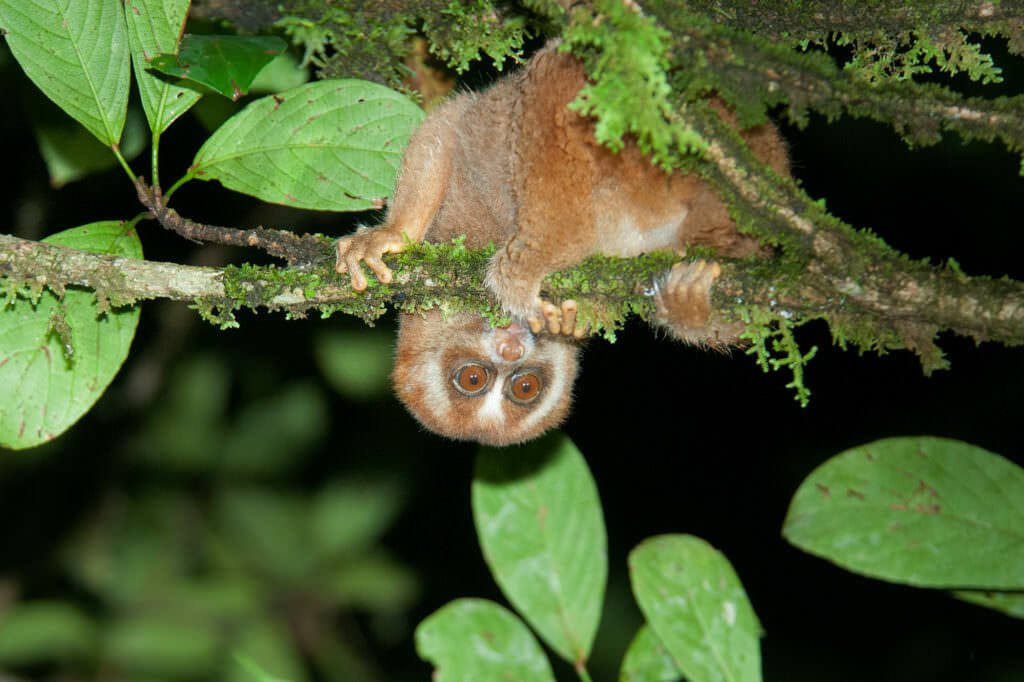
December
- Fireflies emerge in Australia during the last three weeks of December
- Up to two million lesser flamingos congregate at Lake Bogoria in Kenia
- Hammerhead sharks come together in massive schools around Cocos Island, Costa Rica
- Male elephant seals are battling for dominance in Año Nuevo Natural Reserve, USA
- Flying lizards are engaging in mating displays in Borneo
- Snow monkeys ‘hot tubbing’ in Jigokudani National Park, Japan
- Good time to see albino Bennett’s wallabies on Bruny Island, Tasmania
What time of day to go wildlife watching
Being in the right place at the right season is a good start. The next thing to do is to match your activity pattern to that of the animals you want to see. There is no point looking for most cat species in broad daylight or for songbirds in the middle of the night.
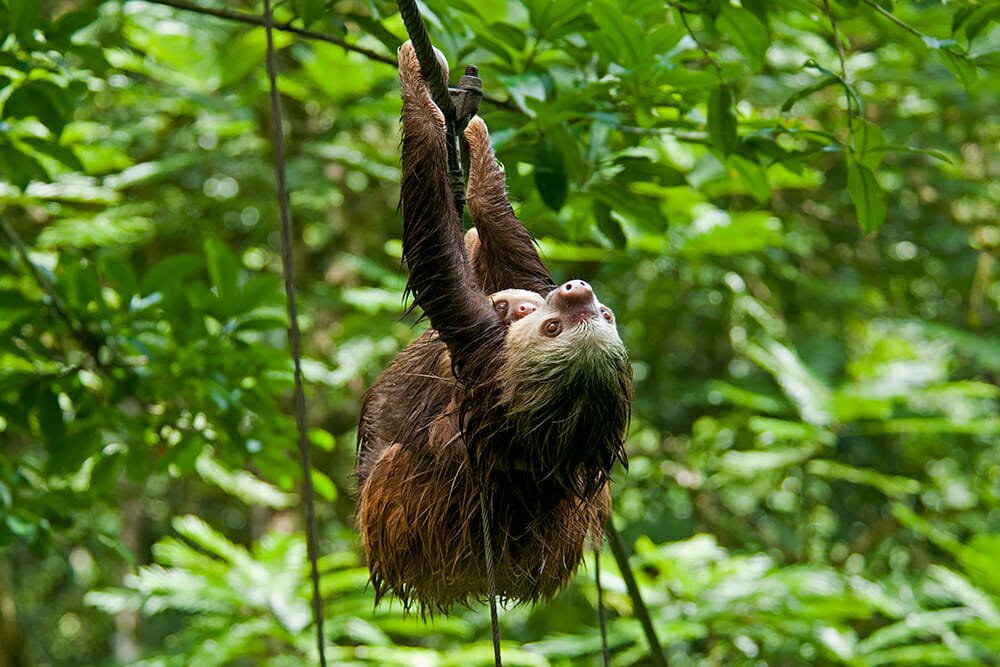
Generally, dawn and dusk are the best times to look for most species. Most nocturnal animals become active at dusk and remain active for a few hours after sunset.
The key is to learn a little about the biology and behaviour of the animal you want to see.
How (not) to approach wildlife
Most wild animals you encounter are somewhat used to human presence, and they will have some level of tolerance. In some species, this level might be very low and they would flee well before you spot them. Other species will tolerate humans as long as we stay well outside of their flight zone.
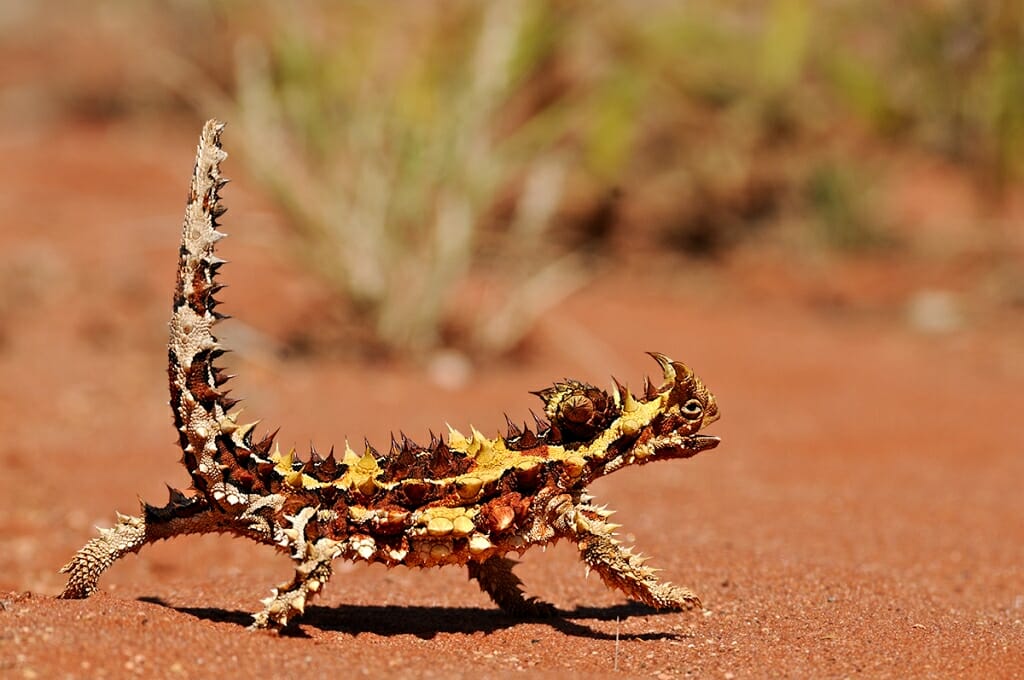
If you start approaching too closely, in the animal’s opinion, you will become a threat and as soon as you cross the animal’s flight zone, it will have to decide whether to fight you or flee from you. Most animals will choose to escape rather than have a confrontation unless they perceive you as a threat to their young.
The point is not to get anywhere near that close. Running away from you will cost an animal the energy that it could’ve spent avoiding predators or looking after its young. So, always watch an animal you are approaching for signs of discomfort with your presence and stop at the first signs. This is why you see wildlife photographers wielding those giant telephoto lenses.
Wildlife tour or Independent trip
This will depend on the kind of wildlife watching trip you are planning and where you want to go. An African safari for example can be done as a self-drive adventure in places like Kruger and Addo National Parks. Costa Rica’s national parks are also easy to explore independently, apart from Corcovado.
But other places can only be visited on an organized expedition, like the Deramakot Forest Reserve in Borneo, or the hills of the Tibetan Plateau.
There are also places that are logistically challenging to get to, like the fly-in lodges in the Amazon or in Alaska, but once you are there, you can explore the area independently.
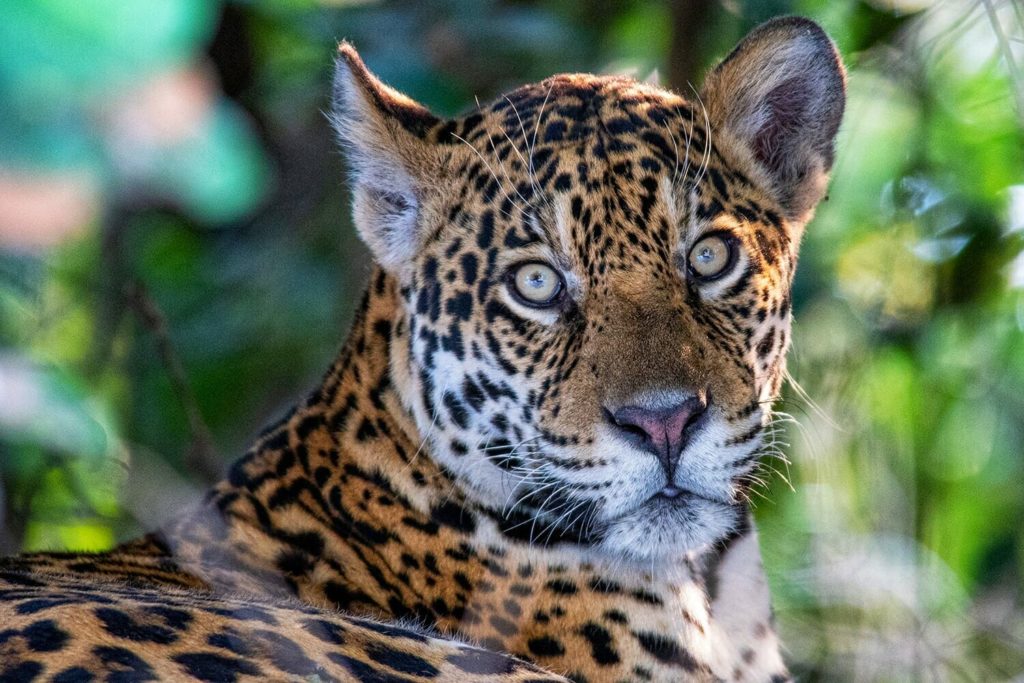
In my experience, most places are much easier to explore with a guide. For example, you don’t specifically need a guide for the Pantanal in Brazil, but it will be a logistical nightmare navigating the wetland, booking accommodation and boat trips on your own.
And of course, with a local wildlife guide, you will see a lot more wildlife than you would on your own. What a good guide brings to the table is all that knowledge about animal biology and behaviour, their tolerance for human presence and simply the best places where particular species can be found. On top of that, with all your logistics taken care of, you can relax and enjoy the experience of watching animals do the things they do.
More Wildlife Guides
- 13 Different Types of Bears and Where to See Them in the Wild
- Australian Animals – Guide to the Strangest Creatures on Earth
- When and Where to See Animals in the Wild: Guide to Wildlife Watching
- 5 Tips to Make a Wildlife Garden and Promote Biodiversity at Home
- Collective Nouns for Animals – Words You Need to Know for Your Next Safari
- Renaissance Cats in Florence – A Feline Lovers Guide to Florentine Renaissance Art
- Cheetah vs Leopard – How to Tell the Two Cats Apart
- All 40 Species of Wild Cats and Where to See Them in the Wild
- The 7 types of elephants and where to see them in the wild
- Amazing Wild Animals in Thailand And Where to See Them

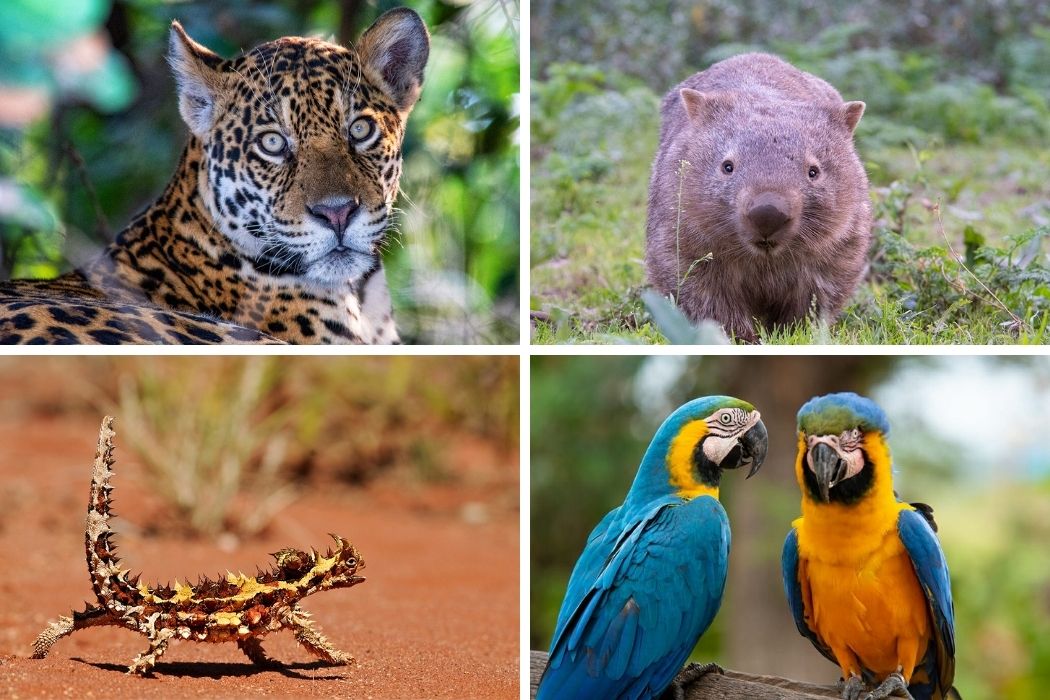
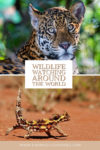
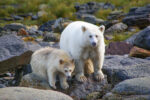
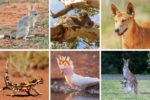
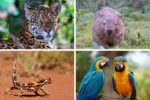

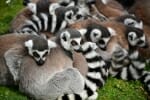
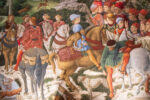
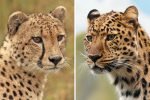
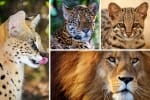

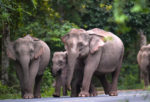
I would love to see all of the animals I. Africa. There are so many different kinds .
Africa is my total dream. I’d love to see all those animals in the wild on a Safari.
So many great places to see wildlife in thier natural habitat! I’m heading to Yellowstone in a few weeks, can’t wait to see some of the wildlife there.
That’s a great guide..it’s so informative
Thanks for sharing.Saving it for later.
I’ve watched a few wildlife documentaries recently and now haven an urge to go and take photos of animals! This is a fantastic guide about when the best time to go is, and I like that you have separated it into different parts of the world too.
I absolutely loved your post. I visited Masai Mara about 3 years back, and I only feel nostalgic after reading this lovely post.